
The zealous joy of a post going viral is undoubtedly the most rewarding dopamine burst that our internet-centric world can offer. There’s certainly something to be said about the crossover between the brain’s Pavlovian reward centers and well-performing social media metrics; however, a well-performing post is not a replacement for a digital marketing strategy. Without the decision to be intentional, your high-performing posts will not breach the surface of effective engagement with your audience.
What are “vanity metrics”?
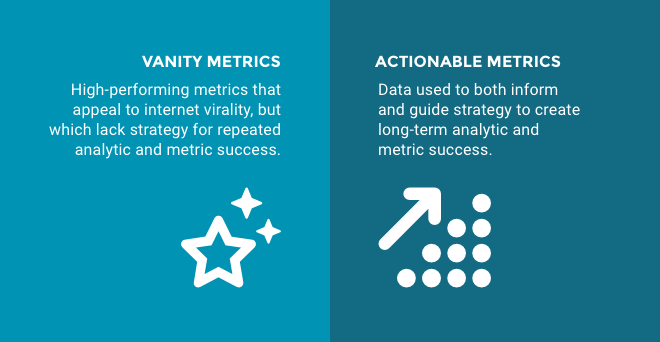
Vanity metrics appear on high-performing posts that do not lead to long-term digital marketing success. Yes, an Instagram Reel may have 10k views, but if the engagement with the audience begins and ends there, the metrics are nothing more than 5 seconds of fleeting fame for your brand. Moving away from seeking the virality of vanity metrics that bring exposure without gaining anything of substance is a critical first step in getting a handle on your social media digital marketing plan.
Understanding Engagements and Impressions
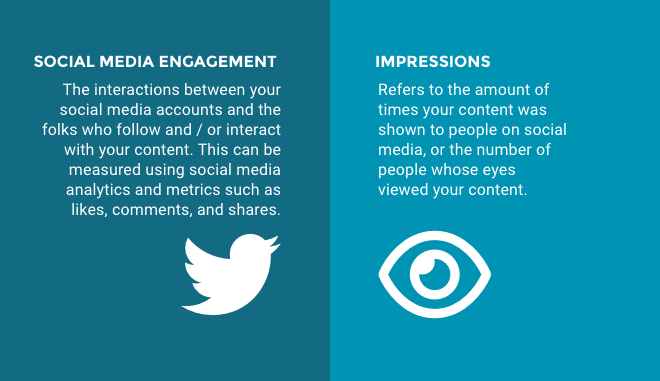
Social media analytics are dominated by two key metrics: engagements and impressions. Engagements refer to the number of times users interact with your content (likes, comments, and shares), and give you insight into how well your content is resonating with your audience.
Impressions, on the other hand, refer to the number of times your content is viewed by users. Impressions give you a sense of how many people are being exposed to your content and brand.
However, it's important to remember that engagement doesn't always equal success. Just because a post has a high number of likes, doesn’t mean it's driving conversions or achieving your digital marketing goals; and a high number of views doesn't necessarily mean that people are taking action.
Building a brand strategy that plays on the insights gained by your metrics (content that performs well, posting times when your audience is active, hashtags that draw in new organic impressions) is key to ensuring your vanity metrics don’t leave you breathlessly chasing the next great trend on the internet.
Other Metrics and Mechanisms to Note
Algorithms
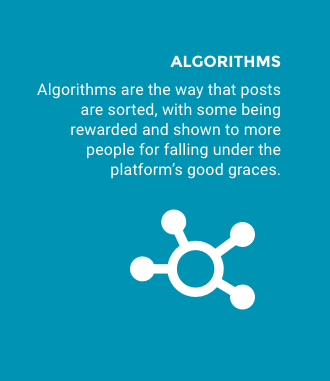
A sister to the elusiveness of metrics is the elusiveness of the algorithms of the different social media platforms. Algorithms are the way that posts are sorted, with some being rewarded and shown to more people for falling under the platform's good graces.
Most platforms, for example, will reward consistency, but will also reward you for not linking away from their site. All platforms want to keep their user traffic, so when you post with copy such as “link in bio,” your post may not perform as well as you’d expect based on previous or similar content. This is one example of how you can use the algorithm to inform your digital marketing strategy.
Engagement rate
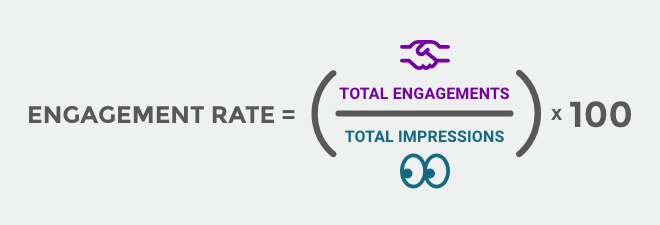
Your engagement rate is a percent found by dividing your total engagement by the number of impressions. This percent shows how actively engaged your audience is with your content.
This is a pivotal metric for presenting to potential partners and the best way to determine if you are curating long-term, meaningful engagement with your audience. Most platforms tout that a 2% engagement rate is considered “good,” and anything higher than that is exceptional.
Ratio
The social media metric “ratio” has been used most frequently to describe a phenomenon that takes place on Twitter but has the potential to take place on other platforms as well. Being “ratioed” describes when a piece of content starts more conversation (drives comments), but does not drive the same amount of engagement (likes, shares, retweets). This occurs when content elicits an emotional response, causes an argument, or is unpopular enough that folks feel inclined to give their two cents.
Simply put, to be ratioed is to have comments greatly outnumber likes and retweets. This denotes content as bad or disliked.
Conversions
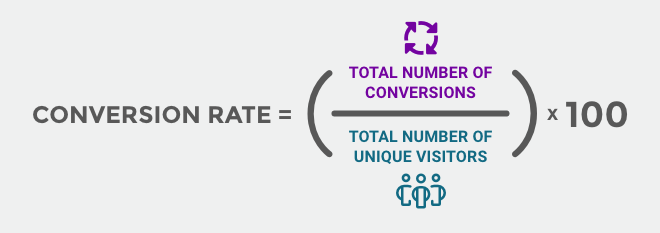
Conversions are important for digital marketing strategies in circumstances where directing your audience to take a desired action is the goal. Your conversion rate is the percent of users who take this desired action, whether that be visiting your site, purchasing your product, or signing up for your email newsletter.
The Importance of Obtaining Social Media Metrics to Inform Your Future Strategies
When you speak with your digital marketing team, learning about and understanding your brand’s engagements, impressions, and vanity metrics is merely the first step in a larger, more expansive conversation. The next step is implementing a strategy that allows your team to learn from the metrics and make continuous improvements, shifting as necessary to thrive in the ever-changing social media landscape.
Looking for more guidance on building a social media strategy that’s more than vanity metrics? Reach out to us!







